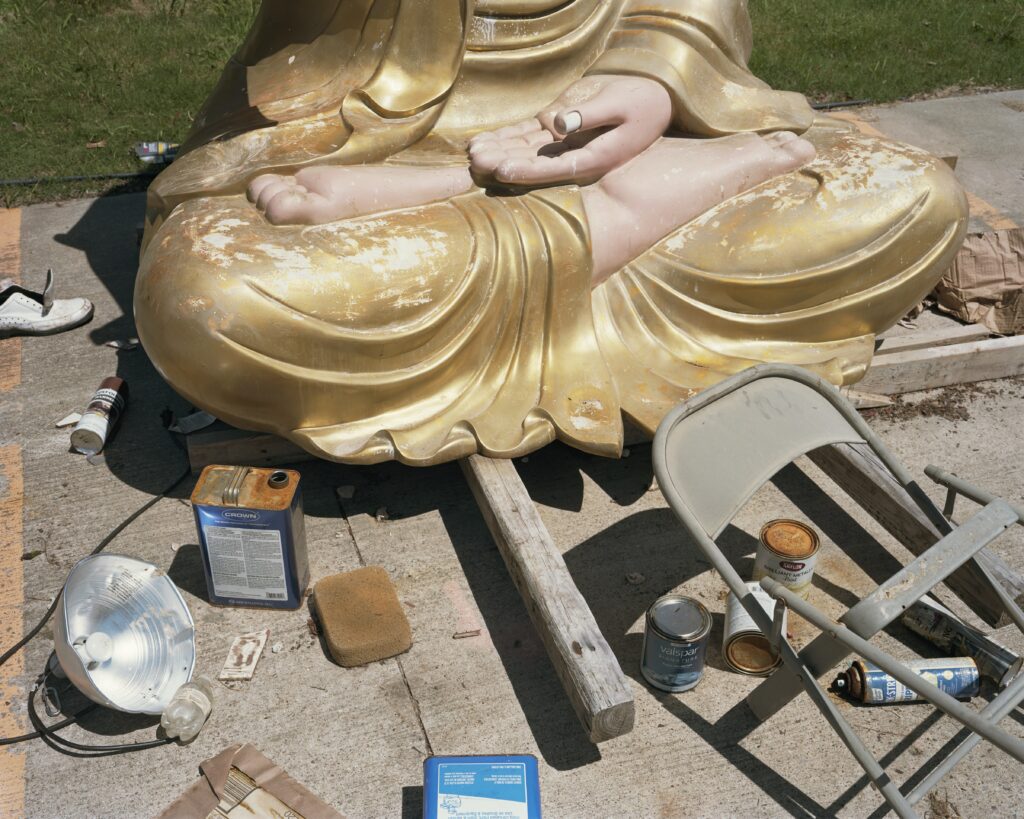
Alec Soth, Quan Am Monastery. Memphis, Tennessee, 2021, archival pigment print, 24 x 30″. All images copyright © Alec Soth. Courtesy of Sean Kelly, New York.
On his travels across the United States, the photographer Alec Soth likes to visit Buddhist temples and sometimes to ask the monks if photography, with its “desire to stop and possess time,” is antithetical to their teachings. He reports that the response is often some variation on “No, I love taking pictures!” After one such interaction in Connecticut, he found that the monk in question had even tagged him in a photo on Facebook. The average American monk, it seems, isn’t concerned about whether the photographic impulse may be a neurotic one born of upādāna, or worldly attachment. Soth, though, clearly is.
Since he burst onto the scene in 2004 with his now canonical book Sleeping by the Mississippi, Soth has been one of the great visual chroniclers of the American condition. His work, armed with Walker Evans’s docu-formalism, fights William Eggleston’s “war with the obvious”; it has always incisively captured the country’s psychosocial landscape, examining who we are and how we feel, collectively. But his new project, A Pound of Pictures, takes a turn inward. Here, America as Soth finds it serves less as a subject than as a vehicle to examine the photographic medium itself, and his relationship to it. The book and the exhibition play on our desire to memorialize, to preserve pieces of experience. Many of these images contain another photograph somewhere in the frame—there are, by my count, seven pictures of people taking pictures—and interwoven throughout are a handful of portraits of well-known image makers: Sophie Calle, Duane Michals, Nancy Rexroth.
When Soth began this body of work, he wasn’t intending to make photographs about photographs. His original plan was to follow the route of Abraham Lincoln’s funeral train, “in an attempt to mourn the divisiveness in America.” But the project, he writes, felt “lifeless,” lacking the fundamental sense of mystery that makes his best work buzz. So, he abandoned the approach, trying to think less and feel more, allowing his camera to be oriented by an inner photographic compass—the instincts he doesn’t always understand but has learned to trust. The result is A Pound of Pictures, a project that is political only in that it asks a people mindlessly producing billions of images every day: What are we doing? And why are we doing it?
I spoke to Soth over the phone just after touring his exhibition at Sean Kelly Gallery in New York. I wanted to ask him some similar questions about the medium he has devoted his life to, and to push him on its efficacy and purpose. But Soth gives no definitive answers, either in our interview or in his photographs: both are structured less by conclusions than by his wandering, wondering curiosity. A selection of photographs from A Pound of Pictures follows the interview.
INTERVIEWER
This project is titled A Pound of Pictures. What was it that appealed to you about thinking of photographs not as weightless visual data but as tangible objects?
SOTH
During the pandemic, on a whim, I created a timeline of the history of photography. I laid it out on a sheet of paper. Then I overlaid my career as a photographer on it and saw that my whole early developmental stage took place in a purely analog world. Inkjet printing arrived right as my career took off. And then, during some of my key years, the internet as we know it came along. I wanted to mark this transition. It’s not that I believe it’s important for things to be physical rather than digital, but I wanted to address my own compulsion towards the physical.
INTERVIEWER
I know that you don’t throw away photographs, and that you collect vernacular photos in pretty large quantities. But I was surprised to hear that you even have trouble deleting images off your phone. Why do you think that is?
SOTH
The way I learned to think of the medium of photography was that the whole point of taking a picture was to preserve a moment. So, throwing away a negative? I can’t conceive of it. Even damaged negatives, ones with giant light leaks, I don’t throw away. I recently read The Night Albums by Kate Palmer Albers, and learned that in the very beginnings of photography, for the first twenty years or so, they struggled to make photographs permanent. Once that was achieved, permanence became the point, but it doesn’t have to be that way. This new world of how we communicate with pictures is in some ways a return to that beginning: the pre-permanent state of photography.
INTERVIEWER
So, for you, throwing away a photo is counter to the very impulse of taking a photo?
SOTH
I sometimes use this analogy: photography is like fishing. Why can’t we all just catch and release? Somehow that seems like a more ethical form of photography. Like, we could go out with binoculars instead of a camera and just look at the world. Why do we have to pin it down?
INTERVIEWER
You could just look through your viewfinder all day and never click the shutter.
SOTH
Exactly. A hunter, on the other hand—I’m not a hunter, by the way—probably wouldn’t wait out in a blind for five hours in the cold unless there was the possibility of taking down the deer. I’m not mounting and hanging every fish I catch, but I do feel the need to save all of them.
INTERVIEWER
A Pound of Pictures made me want to revisit Sontag and think about what motivates us to take pictures. Walking around the exhibition and spending time with the book, I began to feel acutely aware of the fact that the photograph’s promise to freeze time, to make permanent what is ephemeral, is a false one. Do you think photography is an effective way to memorialize a moment? Or is it a noble fool’s errand, something we do to cope with our mortal inability to hold on to anything?
SOTH
I don’t think it’s terribly effective in that way, no. But I do think it’s effective in getting me out the door, in experiencing the world in a way that I wouldn’t without the excuse of photography. I’m always battling cynicism. I noticed this when I started giving lectures to students. I would talk about how there are too many pictures in the world and then realize, This student just exposed their first roll of film and processed it in the darkroom, and they’re super excited about it! Why am I shitting on their experience? So, I’m always trying to get back to that original joy, the joy an amateur has.
INTERVIEWER
Are you talking about “beginner’s mind”?
SOTH
Yes. The thing I want to communicate most in this book is that original enthusiasm. I’m trying to access it again and again.
INTERVIEWER
You’ve also compared photographs to flowers in your attempt to battle cynicism while making this project.
SOTH
It’s a funny thing. People never say, There are too many flowers in the world. Enough is enough! No, we just enjoy the bounty of flowers.
INTERVIEWER
That analogy between photographs and flowers strikes me as similar to Walt Whitman’s comparison of his pages to leaves of grass. Can you talk about Whitman’s influence on this work?
SOTH
I think it’s important to start with the fact that I’m nothing like Whitman. I’m no Ginsberg, I am nothing like those personas of abundance, but I do find tapping into that kind of energy helps my neuroses greatly. Whenever I read Whitman, I feel a little better about the world. This project had its origins in my thinking about Abraham Lincoln and the American Civil War. Whitman was able to write about that period in such a beautiful, open-minded way. Frankly, I wouldn’t have been able to do that. I couldn’t photograph Trump’s America in that kind of spirit. That’s where I sort of got into trouble with this work. But what I was able to do is tap into celebrating one’s own vision, one’s own experience.
INTERVIEWER
In the book you write that attention might be the opposite of neuroticism. How so?
SOTH
We tend to use the word neurotic in a flippant way, but once I understood the word’s more clinical definition, I realized, Oh, that’s me. And I accept that, but it can spin out of control, and the way I’ve found to regain some sort of equilibrium is through directing my attention outward. For example, I’ve always felt like playing ping pong was a balm for my neuroses because all my attention was on the ball and the game. It offered me relief from my own brain. I feel that way when I’m photographing, when I’m in the experience of looking at something intensely. I mean, even people taking a picture of their food—for a brief second, they’re really paying attention.
INTERVIEWER
I always imagined that people’s need to photograph their food was actually a product of their neuroses.
SOTH
Well, maybe the whole photographic enterprise is born out of some neuroses, because we’re thinking about the fact that we’re going to die, and we feel we’ve gotta, like, pin this shit down. But the moment of actually making the photo offers a brief respite from that.
INTERVIEWER
This project, more so than your previous work, flips its attention around, focusing less on the world as you find it and more on yourself and the medium. What prompted this shift?
SOTH
I heard Philip Roth or some writer talk about how you reach a certain point where you become more influenced by your own work than the work of your influences. I still hold on to my early influences, but these days I’m mostly thinking about my relationship to photography. I think it’s just a natural progression that unfolds as you do something for a long time.
INTERVIEWER
A Pound of Pictures, with its self-reflective mode, almost feels like the end of something for you. What is it the beginning of?
SOTH
It’s definitely backward-looking, but just because someone writes a memoir doesn’t mean their next project isn’t going to be short stories or something. Right now, the project is done, and I’m in the phase of talking about it. This is the moment in which I allow myself great experimental freedom. I have six months to a year to just try stuff. Now is when I become a beginner yet again.
A Pound of Pictures is currently on view at Sean Kelly in New York, Weinstein Hammons in Minneapolis, and Fraenkel Gallery in San Francisco. The project’s accompanying book will be published this month by Mack Editions.
Gideon Jacobs is a writer who has contributed to The New Yorker, Artforum, The New York Review of Books, BOMB, Playboy, VICE, and others. He is currently working on a collection of short fiction.
from The Paris Review https://ift.tt/8LqX1TH
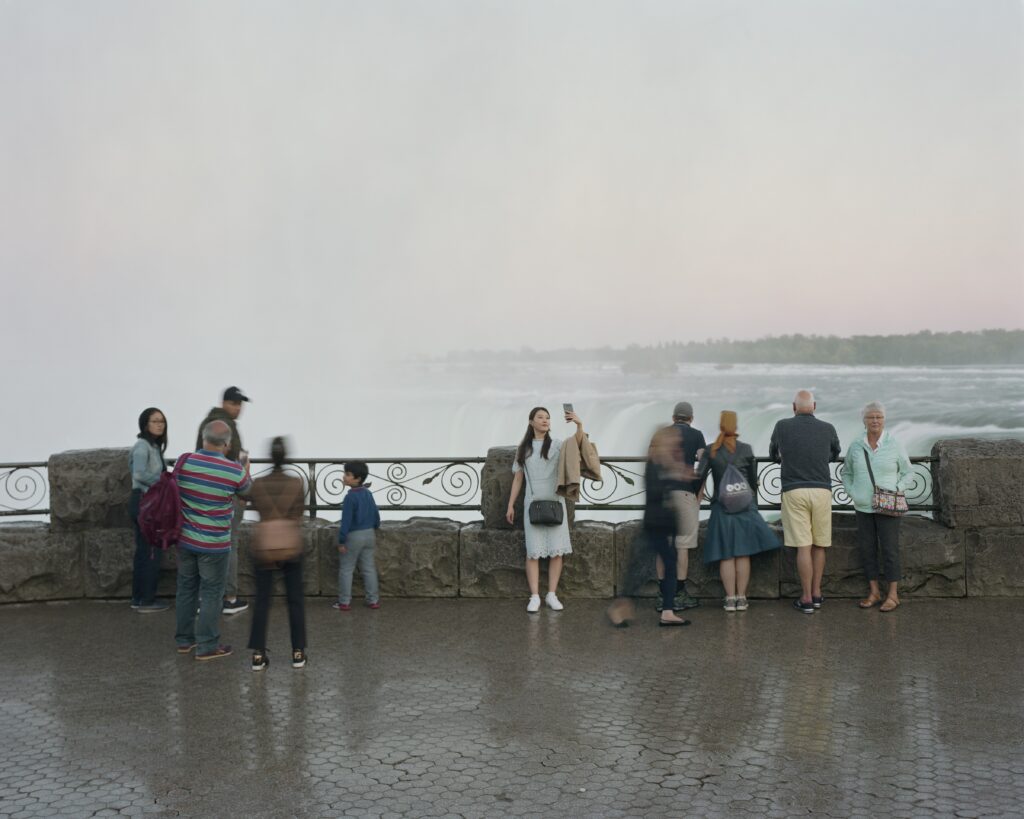
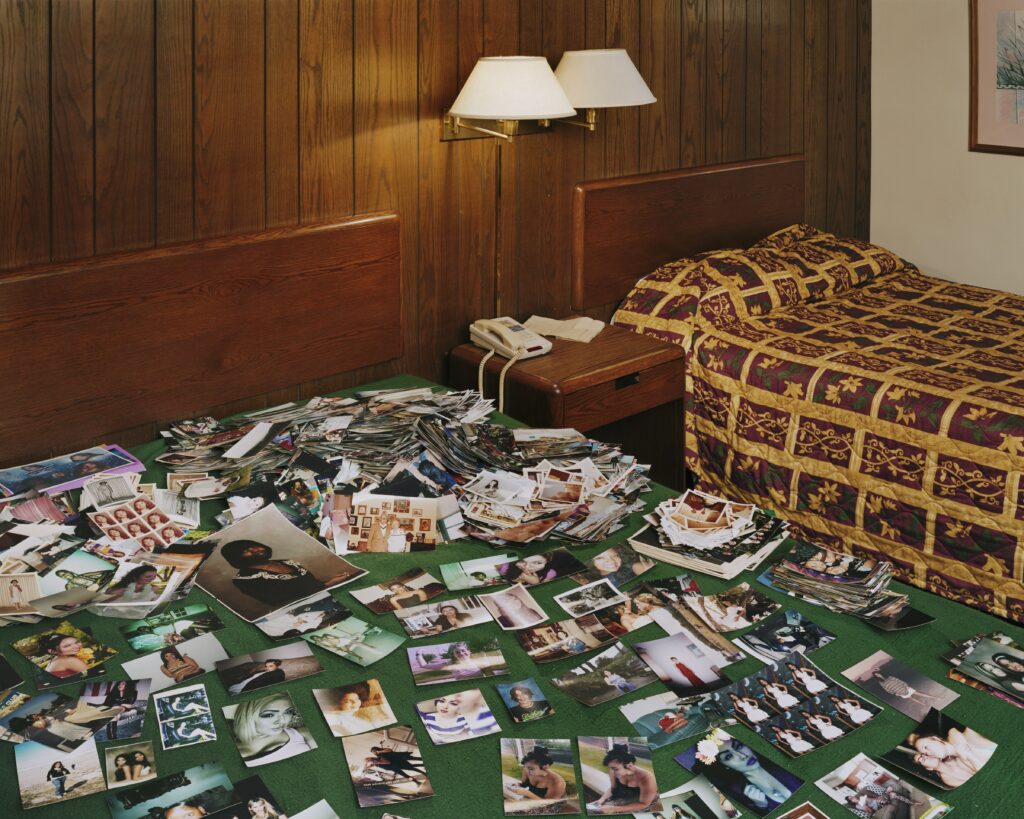
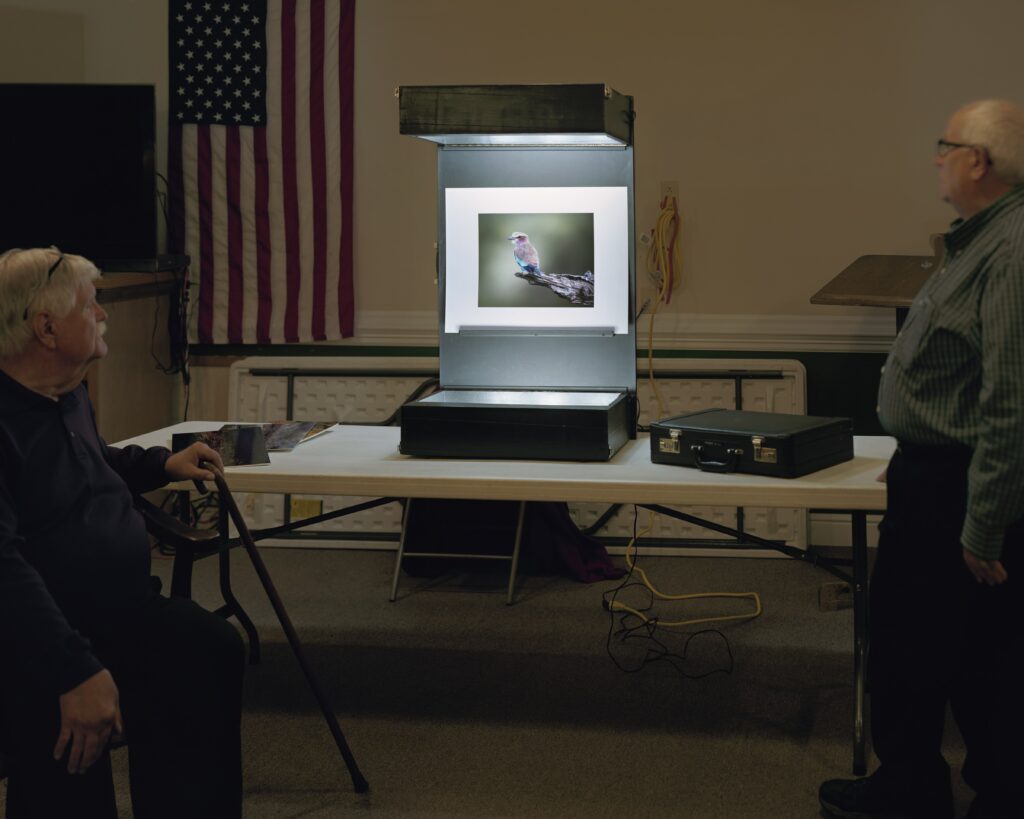


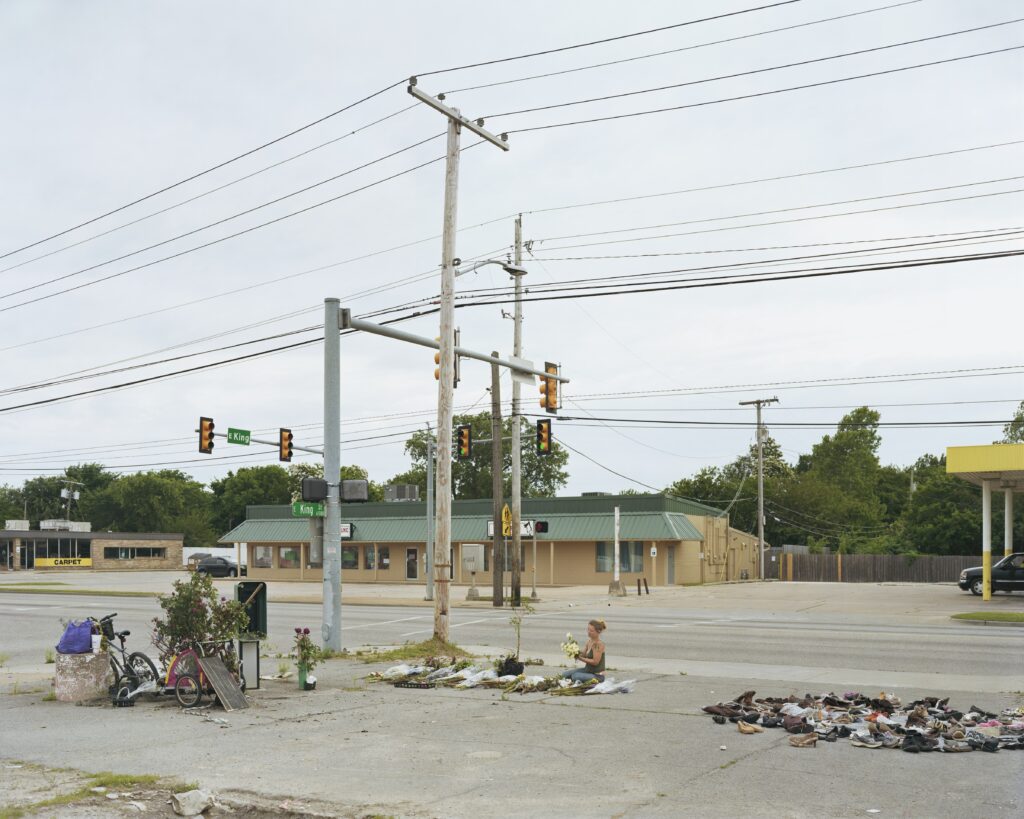
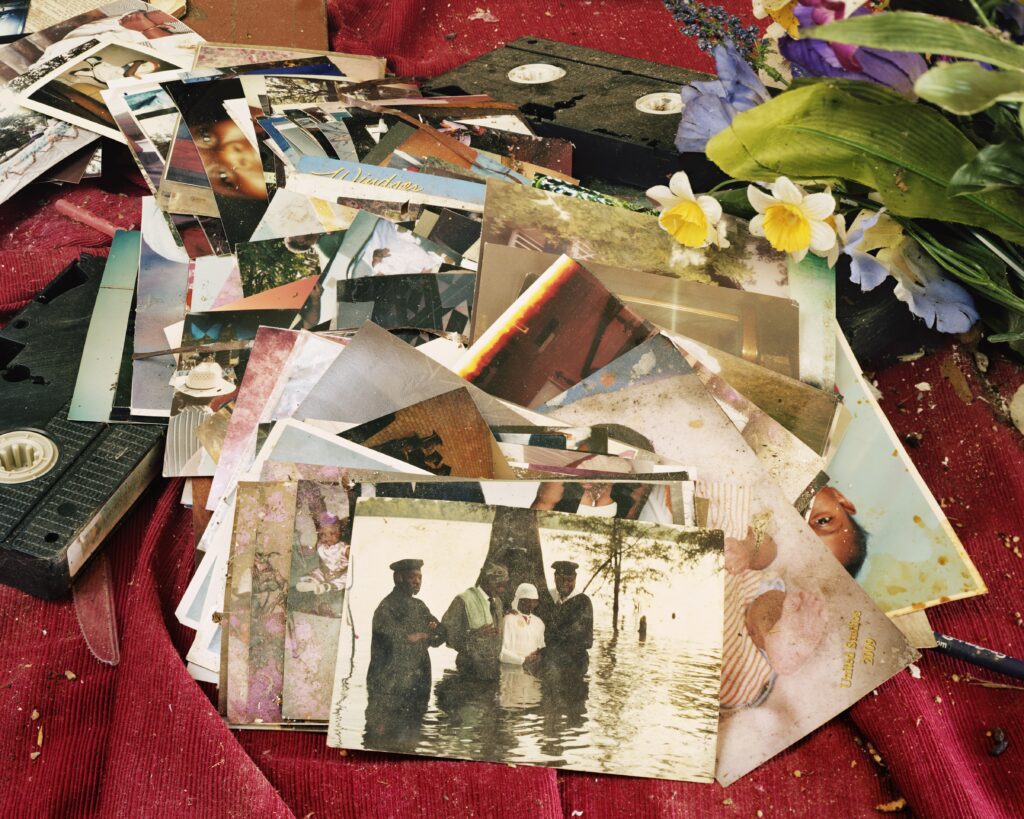
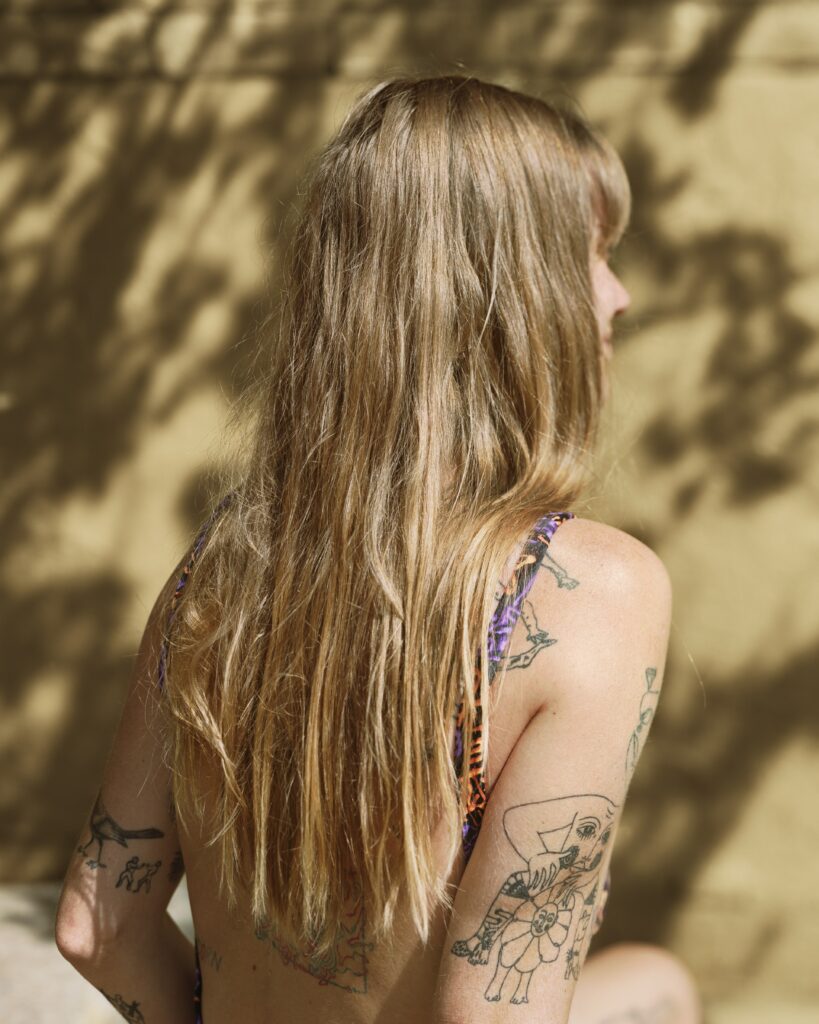
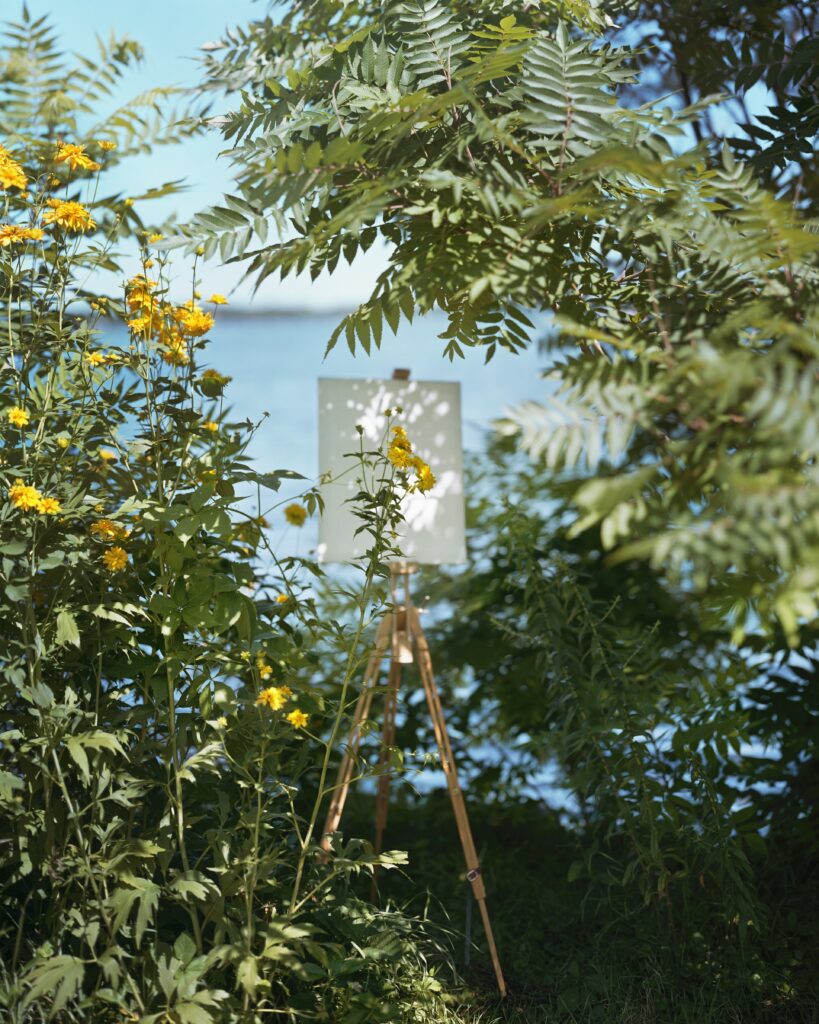
Comments
Post a Comment